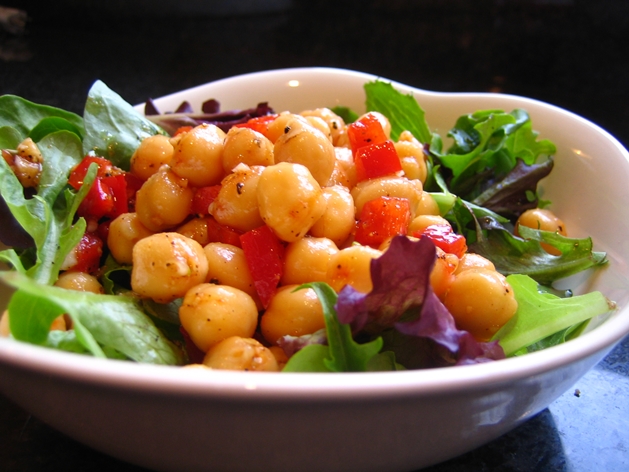
Chickpeas have a good amount of iron and protein, and tastes great in salads. Source: Anna/Flickr
Iron plays the crucial role of supplying oxygen to different parts of the body through haemoglobin in the blood. Normally, a balanced diet is enough to meet the daily requirement of iron. The body absorbs iron from the foods we eat and stores it in the liver and bone marrow. When iron supply dwindles, the reserve is used up. This essential mineral also is vital to growth and development and energy production, normal muscle functioning and in the upkeep of the immune system. Iron also helps in maintaining cognitive function and brain health, by supplying adequate oxygen to the brain (which uses up almost 20 per cent of the total oxygen in the blood). It is present naturally in many foods naturally, like meats, grains, leafy vegetables, pulses, legumes, etc.
A deficiency of this essential compound in the body can lead to anaemia, which ultimately affects the body’s ability to produce red blood cells. Weakness, fatigue, low immunity, breathlessness are just a few of the systems of this deficiency disorder which is not always apparent. Meats like liver, beef, pork, lamb and seafood like clams, certain fishes are excellent sources of iron. Those who do not eat meats are at a greater risk of low iron absorption and are susceptible to iron deficiencies, especially if their diets are not healthy and well-balanced. To prevent this, it is essential to consume iron-rich foods (including spinach) and include them as a part of your daily diet. Another way to max out on your body’s iron absorption capability is to make sure you have enough vitamin C in your diet – since the compound aids and helps regulate the absorption of iron. Here’s a list of five iron-rich foods and easy, hassle-free ways to make them a part of your dietary plan.
Oats
Apart from being rich in iron, oats are also loaded with fibre and antioxidants that go a long way to keep your cardiovascular system healthy. Here’s a recipe for quick healthy breakfast:
Broccoli
We may all have hated it as kids, but broccoli is packed with nutrients vital for a healthy body. And don’t turn up your noses just yet, the salad uses some delicious seasoning to make it more than palatable.
Chikpeas
Another fibre-rich food, chickpeas are a great source of protein; muscle thugs, we’re looking at you. The salad is fresh, easy to make and can be paired with a serving of pan-seared chicken or eaten as a healthy, nutritious lunch.
Millet or bajra
Our grandmothers made bajra rotis and tried several different tricks to have us eat them, but fussy kids that we were, we’d run away. But, they were right, apart from being rich in iron, millet or bajra packs in a lot of goodness by supplying calcium, magnesium, zinc, plus a high amount of starch, vitamin B. This easy upma recipe makes for a great breakfast or an afternoon snack.
Lentils
One of the most nutritionally-rich food, lentils must be a part of your diet – whether it is as a dal, as curries or even soup. This healthy lentil soup uses a handful of ingredients and needs just a few minutes to get ready.









